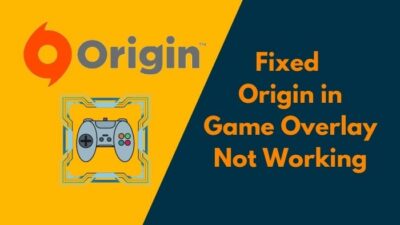Gamescom 2023 was the greatest event for vivid gamers. Nvidia announced the next-gen DLSS 3.5, and AMD revealed the superior FSR 3 image upscaler. Both technologies utilize Artificial Intelligence to enhance the overall gaming experience.
Nvidia takes AI upscaling to the next level using its Ray Reconstruction feature on DLSS 3.5. On the other hand, AMD also directly answers Nvidia with its FidelityFX Super Resolution 3.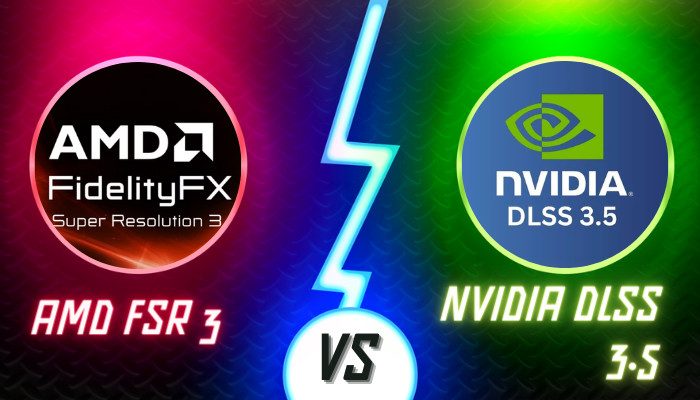
Let’s dive deep into every ins and outs of DLSS 3.5 and FSR 3 technology so you can easily decide which one suits you best.
Understanding Nvidia DLSS Technology
Nvidia is releasing a new version (DLSS 3.5) of Deep Learning Super Sampling (DLSS) that will be at least 2 times more powerful than the previous version (DLSS 3).
Basically, DLSS helps create fake frames that deliver higher framerate output than the GPU can actually generate.
Where DLSS 3.0 fakes the frames, DLSS 3.5 uses Ray Reconstruction (RR) for ray tracing supplementation. Real time ray-tracing graphics and AI make DLSS 3.5 more exciting.
According to Nvidia, DLSS 3.5 Ray Reconstruction has been trained with five times more data than the previous successor, DLSS 3.0. This vast training data contains numerous inputs from additional game and software engine data.
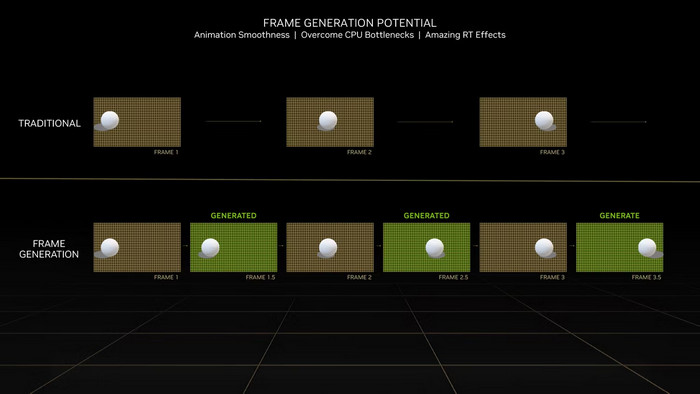
There were two problems up until DLSS 3.5 — denoising & upscaling. The technology was there, obviously good, but it lacked some major improvements. So, with the new DLSS 3.5, NVIDIA introduces a whole new AI model that perfectly balances both upscaling & denoising.
Collaborating with the AI training data, DLSS 3.5 quickly detects good or bad temporal and spatial pixels and then uses this preserved high-frequency data for upscaling.
Image denoisers remove noise from imagery, graphics, and renders. While denoising certain elements or specific images, the system enhances the quality along with preserving important details and structures.
However, during upscaling, there’s a cost of losing a significant amount of data. To solve that, the new AI model brings super-resolution and ray reconstruction to the table. This not only serves the purpose but also enhances the experience.
Nvidia announced the DLSS 3.5 will be available for games in the upcoming Cyberpunk 2077 Phantom Liberty expansion. It will arrive on September 26, 2023, for PC, PlayStation 5, and Xbox Series X|S. Once the patch is applied, games will get a toggle to enable DLSS 3.5 manually.
DLSS 3.5 vs DLSS 3 vs DLSS 2 vs DLSS 1: Generation Upscaling
The following apples-to-apples comparison will help you to understand how each generation leap improves technology and performance.
| Parameters | DLSS 1 | DLSS 2 | DLSS 3 | DLSS 3.5 |
|---|---|---|---|---|
| Release Date | 2018 | 2020 | 2022 | Q1 2024 |
| Performance | Faster frame rates compared to native outputs. | 49% increase in performance compared to DLSS 1. | 45% more performance than DLSS 2. | Trained with 5X more data than DLSS 3. |
| Image Quality | Upscale lower-resolution images to higher resolutions. | A generalized neural network that produces much higher resolution images. | Increase frame rates by up to 4X in fully ray-traced worlds. | Recognizes different ray-traced effects to retain high-frequency information for superior-quality upscaling. |
| Hardware Support | NVIDIA RTX GPUs | NVIDIA RTX GPUs | NVIDIA RTX GPUs | Latest NVIDIA RTX GPUs |
| Advance Tech | Uses Artificial Intelligence to upscale lower-resolution frames to higher resolutions. | Uses artificial intelligence to upscale lower-resolution frames to higher resolutions. | Uses AI to generate whole frames and act as a framerate multiplier. | AI Ray Reconstruction technology makes ray tracing even better. |
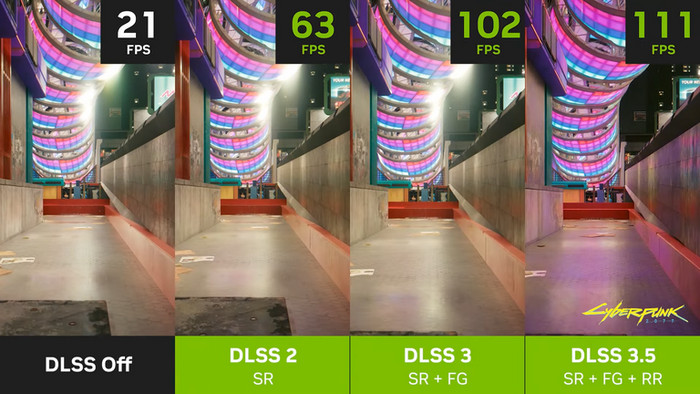
The above picture clearly shows each generation’s improvements and how ray tracing is redefined with the latest DLSS 3.5.
Understanding AMD FSR Technology
FidelityFX Super Resolution (FSR) uses the Fluid motion frames technology to double or triple your average frame rate. When added with Anti-Lag+, it can dramatically reduce latency, making a more stable gaming experience.
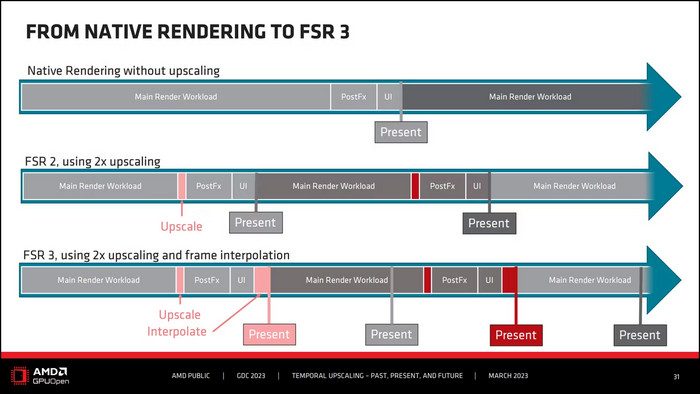
FSR 3 will be open source like its previous successor, FSR 2, and most importantly, it will work on the Radeon 700 series, 600 series, and even older cards.
In addition, rather than the DLSS technology, which only works with Nvidia’s card, FSR 3 will work perfectly on any graphics cards available from various GPU manufacturers. But AMD just didn’t stop here; FSR 3 will also work on gaming consoles like Xbox and PlayStation.
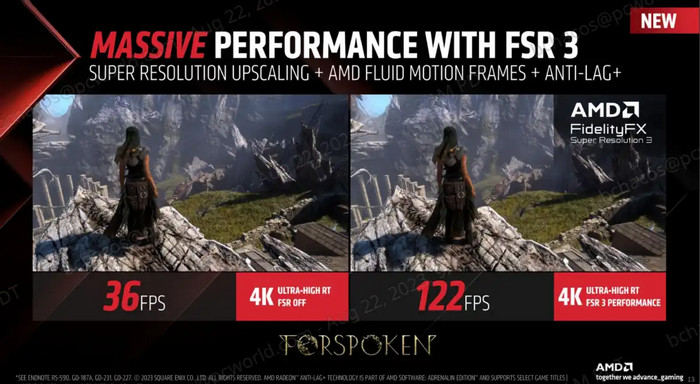
Already, 12 games have committed to integrating FSR 3 technology, and the list is increasing significantly. But the collaboration with 15 game developers, including Unreal Engine, excites us more.
Let’s have a look at FSR 3 supported games and game developers:
Supported Games:
- Forspoken
- Immortals of Aveum
- Avatar Frontiers of Pandora
- Cyberpunk 2077
- Warhammer 40,000: Space Marine II
- Frostpunk 2
- Alters
- Squad
- StarTroopers Extermination
- Black Myth Wukong
- Crimson Desert
- Like a Dragon Infinite Wealth
Supported Game Developers:
- Square Enix
- Sega
- CD Projekt Red
- Unreal Engine
- UBISOFT
- 11 bit studios
- Reflector
Though FSR 3 will run on any Radeon graphics card or other GPUs, the Radeon RX 6000 and 7000 graphics will likely get more performance boost.
Speaking of performance, AMD released a short video on how the FSR 3 increases the game’s performance.
In that video, they demonstrated Forspoken. With FSR 2 and Fluid Motion Frames, the game can only show 36 frames per second at 4K. Contrarily, with FSR 3 active, Forspoken can constantly run at 122fps, which is insane!
As the FSR 3 requires developer integration, integrating the technology into all the games will take a lot of time.
However, AMD developers figured out how to put fluid motion frames into HYPR-RX, meaning most of the DirectX 11 and DirectX 12 games can utilize FSR 3 at the driver level.
Moreover, like the FSR 2.0+, FSR 3 also requires motion vector data to function properly. FSR 3 uses the motion vector data from previously played games that help generate its interpolated pixels.
Now, the most crucial question: When will FSR 3 be available?
Well, Forspoken and Immortals of Aveum are coming with FSR 3 in September. The FSR 3 will be available to the public by Q1 (January 1 – March 31, 2024) in the adrenaline driver HYPR-RX.
FSR 3 vs FSR 2 vs FSR 1: Generation Upscaling
On the other hand, AMD also is not far behind the DLSS technology. With the latest FSR 3, AMD achieved a new milestone in terms of upscaling and frame-generation technology.
The following table will help you to understand how FSR technology improves with each generation.
| Parameters | FSR 1 | FSR 2 | FSR 3 |
|---|---|---|---|
| Release Date | 2021 | 2022 | September 2023 |
| Performance | An average performance gain of 2.4x at 4K resolution. | Temporal nature and detail reconstruction capabilities can provide 92.9% better performance over the FSR 1. | Uses a combination of super-resolution temporal upscaling technology and frame generation, which can provide 61% better performance over the FSR 2. |
| Image Quality | Better image quality at higher 1440p and 4K resolutions. | Better image quality than FSR 1.0 at all resolutions. | Better image quality, sharpening, and 50% more FPS than FSR 2. |
| Hardware Support | AMD or Nvidia graphics cards. | AMD or Nvidia graphics cards. | AMD Radeon™ RX 5700, 6000 and above, NVIDIA GeForce RTX™ 20, 30 Series and above, and consoles. |
| Advance Tech | Robust Contrast-Adaptive Sharpening (RCAS). | Next-level temporal upscaling technology. | Next-gen upscaling, Anti-Lag+, and frame-generation technology. |
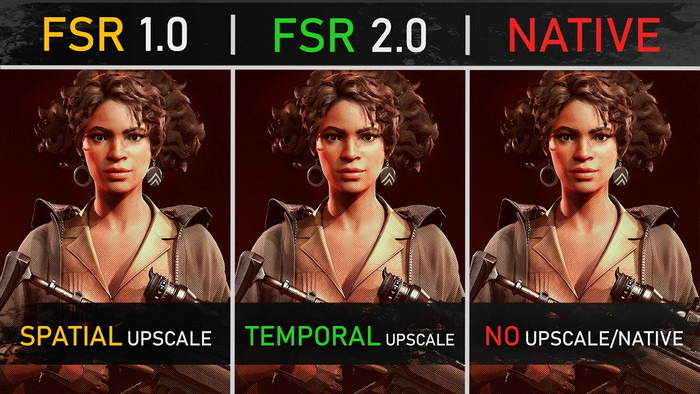
FSR 3 clearly offers a huge jump in performance and quality compared to the previous generations.
The first games with FSR 3 supports (Forspoken and Immortals of Aveum) are expected to launch in early fall. Once the game becomes available to gamers, you will surely get massive performance and maximum fidelity with AMD’s latest upscaling technology.
Nvidia DLSS 3.5 Vs. AMD FSR 3: Head-to-head Comparison
With all the details we have so far, let’s compare DLSS 3.5 and FSR 3 based on their performance, quality, and compatibility. I’ve also discussed how they both stand according to their previous models.
The following table compares various aspects of DLSS 3.5 and FSR 3:
| Nvidia DLSS 3.5 | AMD FSR 3 |
|---|---|
| Hardware-based ray reconstruction uses Nvidia Tensor cores to increase FPS. | Software-based image upscaling technology can be applied at the driver level. |
| Compatible with only high-end RTX cards. | Compatible with most AMD and Nvidia GPUs. It is also compatible with Xbox and PlayStation. |
| Not open-source. | Open-source. |
| Supports only a few games. | Supports most DirectX 11 and DirectX 12 games. |
Because of totally different technology and working methods, comparing DLSS and FSR is quite limited. However, we can still compare the quality and performance of these two technologies using the Hardware Unboxed data.
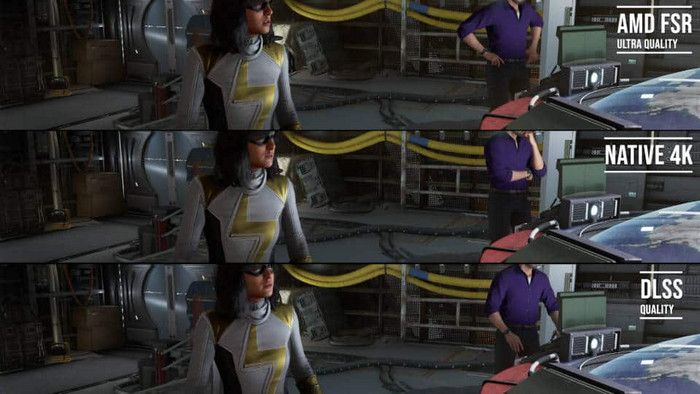
Quality Comparison
We all know how higher FPS redefines the gaming experience. While using image upscaling technology, you will get a much higher FPS, but the overall quality may be reduced.
For a quality comparison, let’s examine the Quality mode results of Nvidia DLSS vs. AMD FSR.
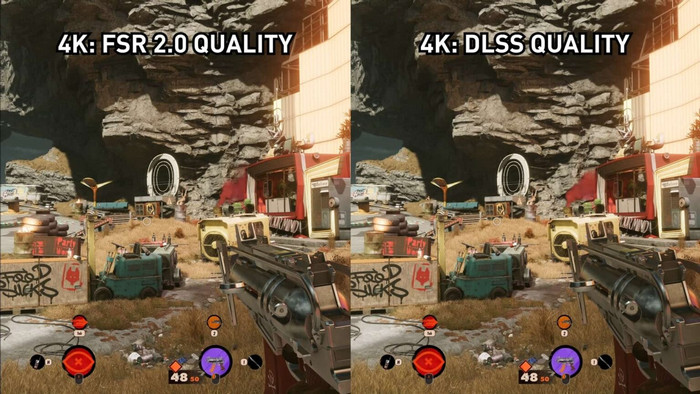
If you closely look at the above result, you’ll find almost no visible differences in the quality. Now, let’s zoom the image 300%.
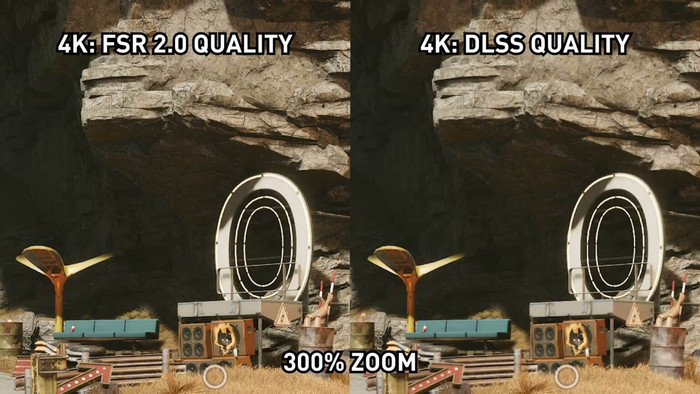
While the image is zoomed in, you’ll notice increased detail and reduced sharpness in the FSR 2 results. The result will be slightly different if you compare the quality for 2K and 1080P. While the FSR produces better texture detail, DLSS focuses more on the image’s sharpness.
Performance Comparison
Now let’s focus on the performance comparison of these two technologies. We used Nvidia’s RTX 3060 Ti and AMD’s RX 6700 XT GPUs to compare the performance.
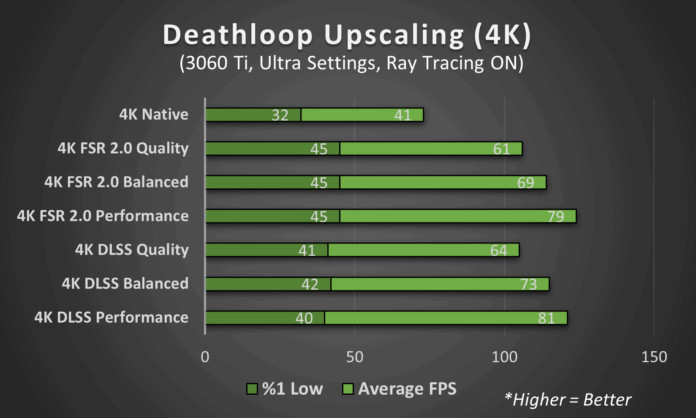
The above result clearly demonstrates that DLSS 2.0 can produce more FPS than FSR. However, FSR beats DLSS in %1 low result because of its lower frame time.
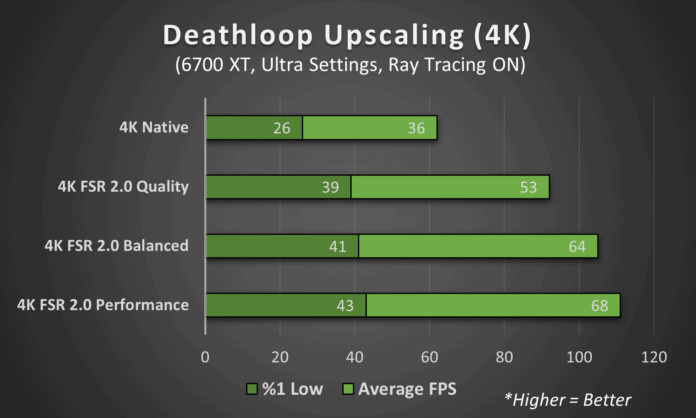
During the test on 6700 XT, we didn’t notice colossal %1 low or max FPS drops. FSR is still capable of boosting the FPS over the native 4K.
Verdict: Which Technology Suits You Most?
In short, the performance and quality results of Nvidia DLSS and AMD FSR are quite comparable. FSR performs slightly better on the 6700 XT, meaning FSR is more suitable for AMD’s hardware. Contrarily, if you own the latest Nvidia cards, DLSS 3.5 will dramatically boost your in-game FPS up to 4X.
Frequently Asked Questions
What games have DLSS 3.5?
Till now, only the Cyberpunk 2077 Phantom Liberty expansion has been selected as the early adapter of the DLSS 3.5 technology. The game will be available on the first week of September 2023.
What games have FSR 3?
AMD published a list of twelve games that will support FSR 3. Forspoken, Immortals of Aveum, Avatar Frontiers of Pandora, Cyberpunk 2077, Warhammer 40,000: Space Marine II, Frostpunk 2, Alters, and Squad are the early adapters of FSR 3 technology.
Is FSR 3 equivalent to DLSS 3.5?
While DLSS 3.5 only offers support for the latest Nvidia GPUs, FSR 3 will be available on most GPUs from all manufacturers and even on Xbox and PlayStation. However, DLSS 3.5 can perform comparatively well because of its selective GPU card support.
Does DLSS give more FPS than FSR?
Yes, DLSS can provide slightly more FPS compared to FSR technology. During the test of 1440P performance, we got almost identical performance from both techs. However, DLSS was somewhat better in both average FPS and %1 low.
Will FSR 3 work on Nvidia cards?
Yes, FSR 3 will be functional on NVIDIA GeForce RTX™ 20, 30 Series and above cards. However, I suggest you use the latest Nvidia card to get the maximum output from FSR 3.
How to enable dlss 3.5 in Cyberpunk 2077?
DLSS 3.5 will be available on Cyberpunk 2077 Phantom Liberty expansion on September 26, 2023. Once the patch is released, you will get a toggle to enable DLSS 3.5 in Cyberpunk 2077.
Final Thoughts
Both Nvidia and AMD are currently dominating the GPU industry — developing new technologies and helping gamers utilize most of their gaming components. And the integration of artificial intelligence into gaming is finally about to start booming through DLSS 3.5 and FSR 3.
So, is FSR 3 the right answer to Nvidia DLSS 3.5 — What do you think? Let me know your thoughts.

